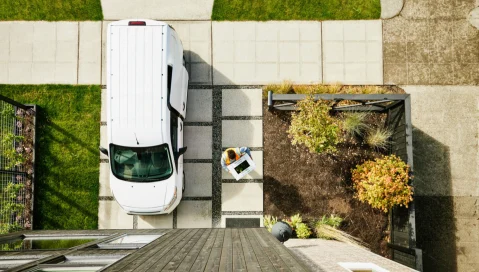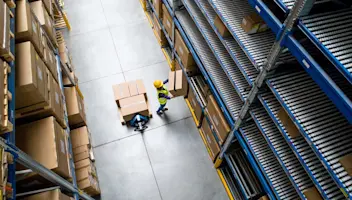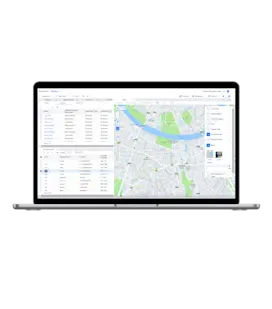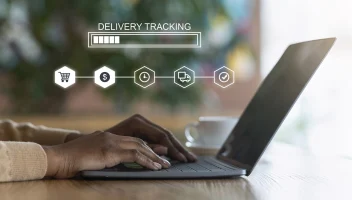Uitgelicht in deze blog
Home Delivery Software Must Shape Demand, Not React to It
Home Delivery Software Must Shape Demand, Not React to It
23 Nov 2021
Jim Endres
Customer experience is king when it comes to in-home delivery operations. Whether consumers are receiving an appliance, furniture, or healthcare products—they want to choose the specific day and time of delivery. And they want to do it themselves online, on their PCs or mobile devices.
Offering this level of convenience and precise choice comes at a cost; and in the competitive retail market, it’s not a cost retailers can easily pass on to consumers without eroding market share. The challenge is figuring out how to win the customer experience battle without wiping out profits.
The right software can help. Unfortunately, the software used to manage most home delivery operations is outdated and fails to capitalize on the latest advances in route optimization. While it allows consumers to choose the day of delivery, it does so at the expense of fleet efficiency.
The result? Your cost for trucks, drivers and miles is 10–20% more than it should be.
It doesn’t have to be this way. Modern home delivery software uses more sophisticated algorithms that, when integrated directly with point-of-sale and ecommerce platforms, help shape consumer demand for home delivery on particular days. This technology lets consumers choose delivery windows that work for them. But only from days and times that are most convenient for you, the distributor—a win-win proposition.
What’s the Bucket System and How Is It Costing You Money?
The main culprit in the outdated approach to managing home delivery fleets is the tried and not-so-true “bucket system,” used by most home delivery software to plan routes.
Based on historical data, delivery territories are divided into fixed zones. We equate these zones to buckets because each has a fixed size and shape that doesn’t change, even as delivery points do. Assumptions are made about how many deliveries can be completed during a given day in that zone and those assumptions are loaded in the routing software. As consumers in Zone 1 request delivery for next Wednesday, for instance, the software will accept these requests until the daily delivery limit is hit. At that point, it will stop offering Wednesday delivery as an option. The bucket is full.
The major flaw in software that uses the bucket system method is that it doesn’t examine exactly where the deliveries are occurring as orders come in—only that they are in Zone 1. It’s here that the bucket system starts leaking profits in a big way.
With this method, the software establishes a daily delivery limit based on an average geographic dispersion of delivery points. Let’s say that number is 15. But what if all deliveries are in one part of the zone which is very close to the distribution center? In this case, the driver could easily handle 20 deliveries. You’re paying him to be 25% less productive than he could be.
What if, conversely, the day’s deliveries were spread very unevenly across the zone, as shown in the accompanying map? In this case, there’s a good chance you would anger customers by failing to make all scheduled deliveries. Even if you could fit them all in, you most certainly couldn’t accommodate the two-hour delivery windows customers are increasingly demanding.
Nirvana for fleet operators is a smooth, consistent allocation of resources. The bucket system is too crude and inflexible. Using it, you will almost always be over or under your optimum resource utilization. In the future, when offering tight delivery-time windows at the point of purchase becomes standard, the bucket system simply won’t enable the level of precise routing required.
The Bucket System Undermines a Great Customer Experience
Not only does the bucket system make your fleet less efficient, it also limits your ability to shift from an inefficient, old-school approach to one that will wow customers with a great post-sale experience.
Here’s the old scenario. Routes and delivery times are planned after delivery requests are made. So precise delivery windows can’t be offered at the point of sale. Consumers can choose only the day of delivery, with a promise from the retailer that they will be alerted—probably with a phone call the night before—to the delivery-time window when the order will arrive.
This is unacceptable to today’s buyers.
Between work and personal schedules, who can block out an entire day on their calendars to accommodate a retailer’s delivery preferences? Consumers buying goods for home delivery want to choose a convenient delivery day and time and lock that in when they purchase. Going forward, consumers will buy from brands that practice truly customer-driven home delivery that adapts to their schedules, not the other way around.
If your brand is dependent on business buyers as well as individual consumer purchases, the bucket system can limit commercial opportunities here, as well. Take a healthcare system responsible for delivering medical equipment—like walkers or oxygen machines—to patients’ homes. Such organizations partner with equipment distributors and other suppliers to fulfill these equipment needs. Increasingly, they are requiring sub-contracted suppliers to offer two-hour delivery slots to qualify for the contract. If your home delivery software doesn’t allow you to confidently meet this requirement, you’ll lose out.
The Solution: Don’t React to Delivery Demand, Shape It
Modern home delivery software is available to replace the old-school bucket system with a solution that shapes delivery demand as it occurs.
This advanced software doesn’t batch orders and then create a plan. It re-spins the plan for the entire delivery network continuously after every order, constantly reshaping routes, and juggling delivery requests without the artificial limitation of putting them into fixed buckets.
This means you can shape delivery demand by offering consumers delivery slots that complement those already in the books. For instance, if initial delivery requests for a particular day are clustered in one geographic area, the software will integrate with your ecommerce site to show this as a preferred delivery day to subsequent buyers in this same area, thus driving density to where you already have trucks and drivers. Or if you know that on Friday you have no truck anywhere near the customer’s address, you can label that day as unavailable.
You can further influence delivery selection times by flagging eco-friendly choices that result in the fewest miles or offering discounts for choosing delivery days and times that fit best with your schedule. Consumers see those options on an easy-to-use online interface that integrates seamlessly, and in real time, with your ecommerce platform. The delivery options change for each new customer based on previous orders.
Advanced home delivery software continuously reshapes routes based on actual demand to keep your trucks and drivers as efficient and productive as possible. It’s a dual benefit. Consumers are free to choose from a flexible schedule of delivery dates and times, but they choose from options that work best for your bottom line.
The future of home delivery operations is less about route planning and more about route shaping.
A major bed retailer, Dreams, uses home delivery software from Aptean to boost the efficiency of its 12,000-home-deliveries-per-week operation. When Dreams salespeople offer customers delivery time options, the software shows them available options in red, amber and green—with green being the most eco-friendly option for the consumer and the most profit-friendly option for the retailer.
How Advanced Home Delivery Software Boosts Your Bottom Line
By having consumers select delivery times from a range of choices at the point of sale, fleet operators gain multiple financial benefits that go way beyond simply making routes more efficient.
One benefit is an increase in first-time delivery success. It stands to reason that if your buyers choose a delivery day and time that works for their schedule, they are more likely to be home when your driver arrives. If they are not, you add hundreds of dollars in incremental costs for each failed delivery. These costs include include warehousing to re-stock, store and repick the order, customer service resources to coordinate re-delivery, and the operational costs of a second trip to the same location.
Based on our work with dozens of retailers with large-scale home delivery operations, we estimate that having software that allows consumers to choose delivery windows can improve first-time delivery success 2.5–5%. For one retailer of outdoor furniture, first-time delivery success improved from 95.9% to 98.4% after the company enabled the self-service feature of its home delivery software. That simple step has prevented 50 failed deliveries per week and triggered six-figure annual savings.
Home delivery software that offers flexible delivery options at the point of sale can also enable incremental revenue opportunities. Let’s say you buy a washing machine and it turns out that two people on your block are getting washers delivered next Wednesday from the same retailer. When choosing your delivery time, the right software will flag Wednesday as your best delivery option. But perhaps your schedule only allows you to receive it at 5 pm on Friday. Well, the retailer doesn’t deliver to your area that day, so it won’t show up as a delivery option. But a special request can override the system and allow you to request a custom delivery slot—at a premium price.
Airlines make millions capitalizing on the fact that certain travelers want to choose where they sit, and are willing to pay more for the privilege. You can do the same with home delivery slots, but only with sophisticated software that can flexibly manage delivery options at the point of sale.
How Advanced Home Delivery Software Enables a Great Customer Experience
You can book a set time for a dental appointment or an oil change with a phone call or a tap on your smartphone. No one needs to call you the day before the appointment to work out when you should arrive.
Consumers want the same degree of certainty with in-home deliveries. They want the freedom to schedule work and errands around a set delivery time. In fact, Accenture research found that nearly 60% of consumers would switch retailers if they didn’t offer a fast, flexible scheduling process and delivery options.
Advanced home delivery software that plans and shapes routes on the fly can offer tight delivery windows during the purchase process. The powerful software works in the background as it seamlessly integrates with your ecommerce site. Consumers see only your branding on the scheduling tool and appreciate the flexibility it gives them to book and change appointments online—without the need to talk to a human.
The beauty is that, while customers experience a strong sense of freedom and flexibility to choose their own delivery slots, it’s not at the expense of operational efficiency. While you limit delivery choices to profit-friendly options, customers feel like they are in control. And they appreciate the ability to track delivery progress right until the truck arrives.
Another way advanced home delivery software improves the customer experience is that it can promote a greener delivery process. Buying decisions of all types are increasingly influenced by the ability to make CO2-friendly choices. Consumers admire digital-savvy brands smart enough to provide proactive advice during the delivery booking process, like: “We’re already in your neighborhood next Wednesday, so pick this day to minimize miles and carbon emissions.” For some, green-friendly choices are a huge motivator; plus, it makes them feel better about the purchase decision.
Automate Driver Activities to Achieve Full Digital Transformation of Home Delivery Operations
Home delivery software enables far more than just intelligent routing of vehicles. It’s a system that can drive efficiencies throughout your company, with technology that can digitize manual, paper-based processes to get work done faster and smarter.
By choosing software that includes electronic proof of delivery (ePOD), drivers can capture far more than a customer signature. They can record detailed notes on the delivery, take photographs, and enter details. For example, they can add site notes, like, “Are the customer’s doors wide enough for the product to be delivered?” They can also notate time stamps and maintain real-time communication with your customer service team to make on-the-spot decisions during delivery.
Let’s say one of your drivers delivers a refrigerator and notices a scratch on the side. Traditionally, the customer might reject this delivery and the driver’s only option would be to take the item back to the warehouse and have the consumer contact customer service to work out the next steps. With powerful ePOD capabilities, the driver can take a photo of the appliance; submit a short form online that triggers a call to the home office; put a customer service rep on the phone with the customer to negotiate a discount; and, finally, complete delivery of the scratched item if the customer agrees to accept it with the discount.
All of this can happen in a few minutes without upsetting your tight delivery schedule. You avoid the cost of redelivery and your quick action saves face with the customer.
Here are a few other examples of how ePOD technology improves speed and efficiency:
Document workflows. Delivery processes can differ by type of equipment and customer. At the start of a delivery, drivers can simply bring up the process on their device and follow the step-by-step instructions.
Dispute delivery-time claims. Your delivery process can include taking time-stamped photos of the customer’s front door. If the customer claims the item was not delivered at the agreed time, the photo can provide proof that it was—and in pristine condition.
Dispute damage claims. Photos can also provide evidence of the condition of walls and floors before and after delivery to help resolve damage compensation claims.
Access documentation. If a delivery team is installing a bed and needs a PDF of the assembly instructions, they can bring it up on their device.
Eliminate paperwork. Home delivery software with ePOD capabilities collates every detail your driver captures and transmits that detail back to a browser-based management portal in real time. No more waiting for drivers to return to base before responding to issues. No more laborious manual data entry, transcribing each driver’s handwritten notes on delivery issues.
If your drivers are still leaving the warehouse in the morning with a sequenced stack of delivery documents awaiting customer signatures, you need to extend your organization’s digital transformation to home delivery operations.
To explore further, check out our Ultimate Guide to the Benefits of Proof of Delivery Software.
Visibility Keeps Customers Informed and Streamlines Backoffice Processes
Customers want to be kept informed throughout the delivery process. You can do that effortlessly using the same software that shapes delivery demand.
Modern home delivery software can be programmed to trigger updates at any time. For example, you can send an email the day before delivery reminding the customer to expect you within the agreed time window. At the same time, you can provide a link to a delivery vehicle tracking portal so the customer can see the driver’s progress in real time. The system can even generate a text message when your driver is 30 minutes out, enhancing customer confidence and further decreasing the chances of a failed delivery.
While such capabilities could once set you apart, today they are table stakes as more and more of your competitors invest to create a great customer experience. They know that most consumers won’t return to a brand or retailer after even one bad delivery experience.
A producer of made-to-order furniture recently upgraded its home delivery software to enhance the delivery experience. The company takes anywhere from three to five weeks to assemble items once ordered. Previously, customer service reps called customers to arrange delivery when products were ready. Today, completed orders hit the system and automatically trigger an SMS or email to customers with a link that enables them to choose their delivery day and time.
When you digitize delivery processes, you not only enhance the customer experience, you create efficiencies across the organization. It comes down to having a real-time view of what’s happening in the field.
Your biggest benefit may be in reducing the cost of customer service and other back-office activities. Consumers checking on delivery statuses are no longer interested in calling a call center and being put on hold. They prefer to check the status themselves on a smartphone. Modern home delivery software makes that possible, yet many retailers lack this capability and, as a result, pay $7–$13 for every incoming “where is my order?” (WISMO) call. If you eliminate just 100 of these calls a week, you can save almost $70,000 annually—and create happier customers in the process.
Other examples of how visibility to delivery data streamlines back-office processes include:
Real-time notice of completed deliveries lets your finance team speed the invoicing process to improve cash flow
Visibility of returns allows your warehouse team to streamline warehouse and stock management practices
Digitization of delivery processes with ePOD software eliminates data entry work in the transportation department, along with the potential for errors
By investing in the most advanced home delivery software, you not only help shape demand to optimize routes, you make your entire organization more productive. With a corresponding boost to your bottom line.
Shape Your Company’s Future
For retailers of furniture, equipment, appliances, medicines and other items that require in-home delivery, a great home delivery experience has become a linchpin of your brand’s value proposition. As a result, those responsible for fleet operations at such brands—people who have historically worked in the shadows—have been thrust into the spotlight and asked to tackle a dual challenge: Create a great customer experience while keeping delivery costs as low as possible.
If you’re confronting this challenge with out-of-date home delivery software, you’re costing your company money—as much as 20% of your fleet operating budget.
The good news is that Aptean’s modern home delivery software can help you shift from the standard bucket system method for route planning to one that actually shapes consumer demand for delivery on certain days and directs them to slots that maximize truck and driver utilization.
The challenge goes beyond smarter booking and scheduling of delivery times. Your route planning engine must be part of a comprehensive home delivery execution system that replaces old-school, paper-based processes with digitized workflows. This not only makes your team more efficient, but allows consumers to book, change and manage the entire delivery process—right from their smartphones.
It takes bold leadership and investment to be a service leader in home delivery. But do you have a choice? Today’s consumers expect nothing less.
Accept this challenge and you can shape not only delivery demand, but your organization’s future.
So, if you’re ready to shape the future of your home delivery operation, then Aptean is ready to help. Reach out to one of our experts to start your journey and be Ready for What’s Next, Now®.
Related Blogs


Bent u klaar om uw bedrijf radicaal te veranderen?
We hebben gespecialiseerde TMS-oplossingen waarmee u elke uitdaging in uw branche aankunt.






